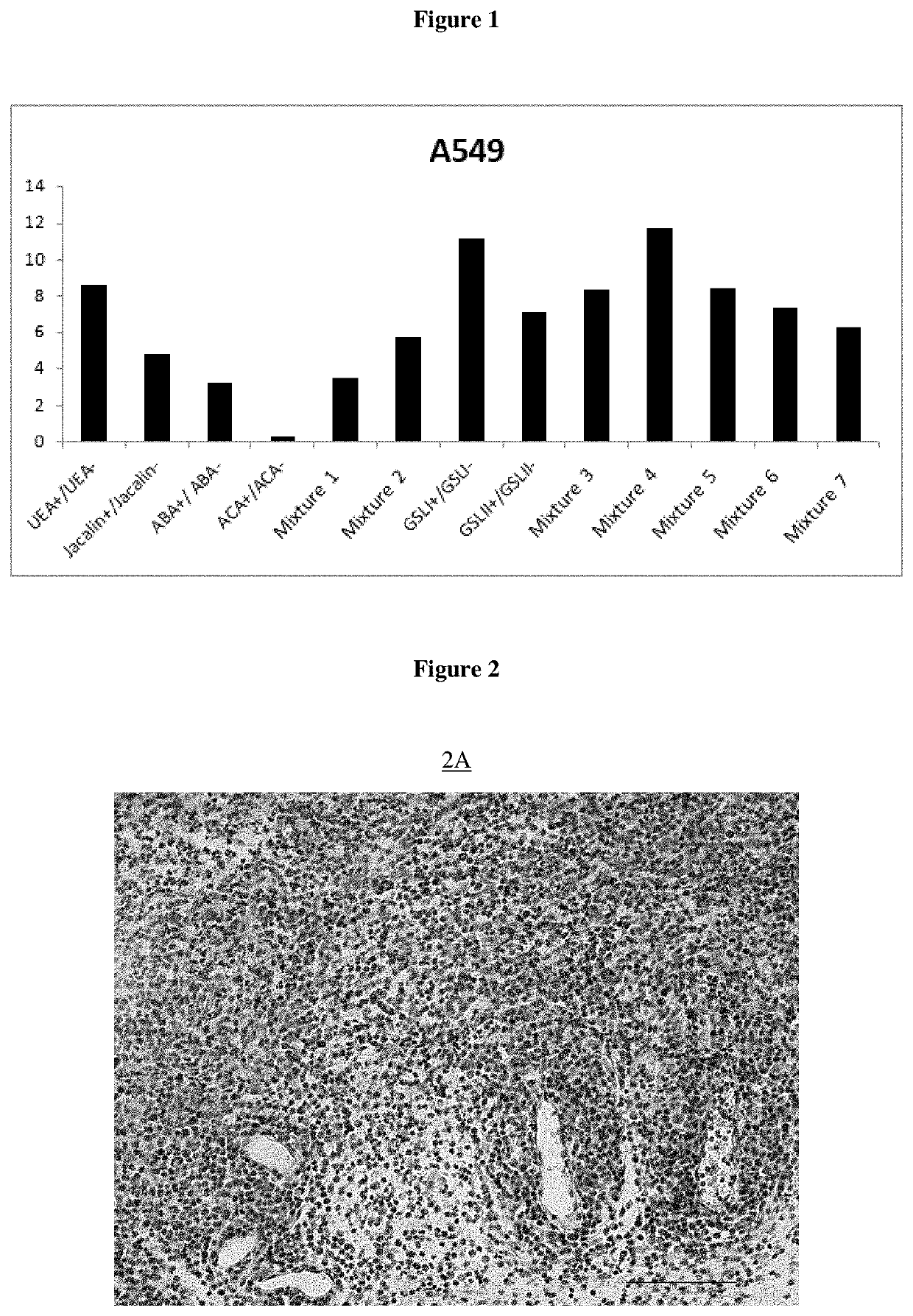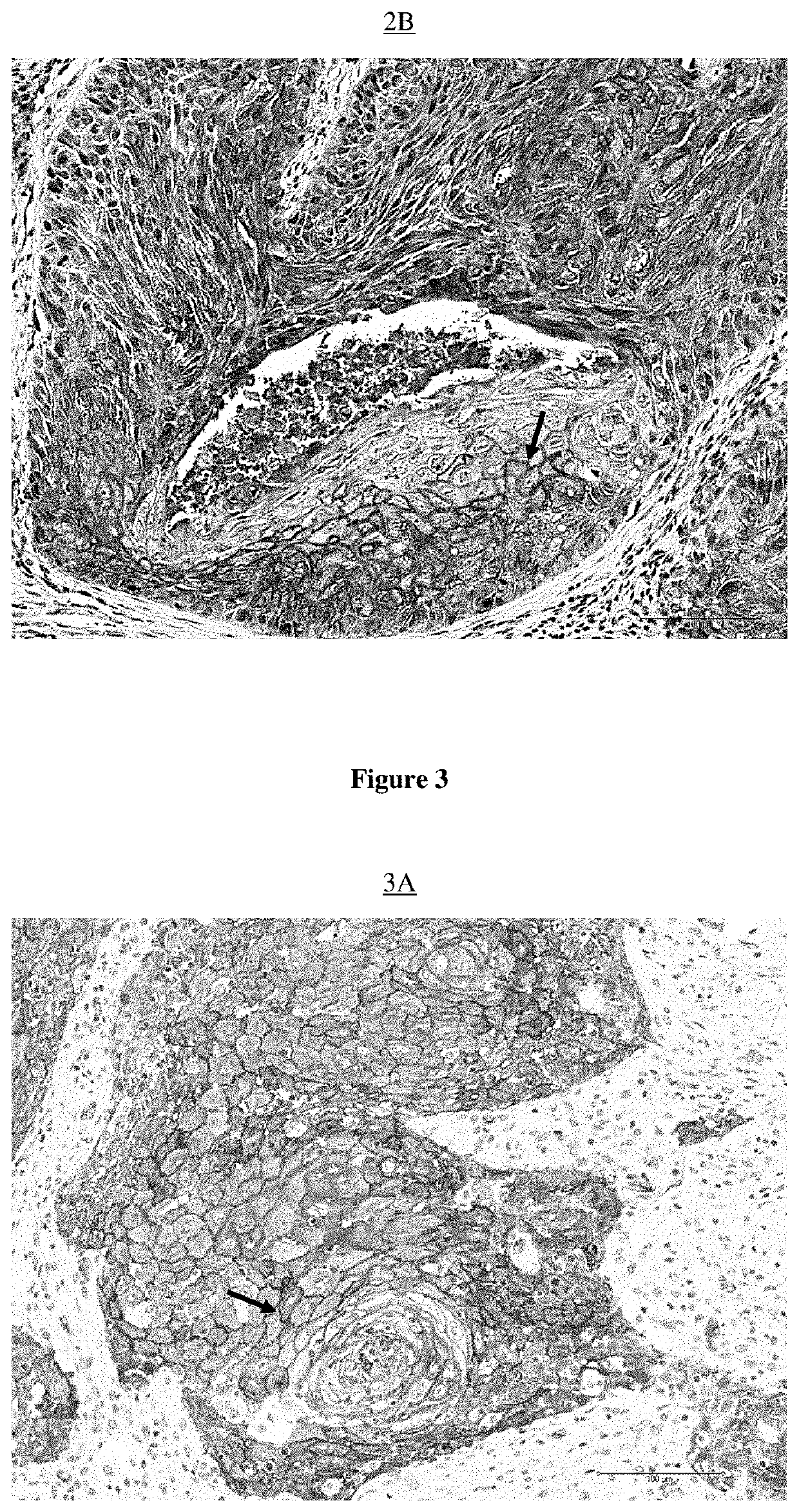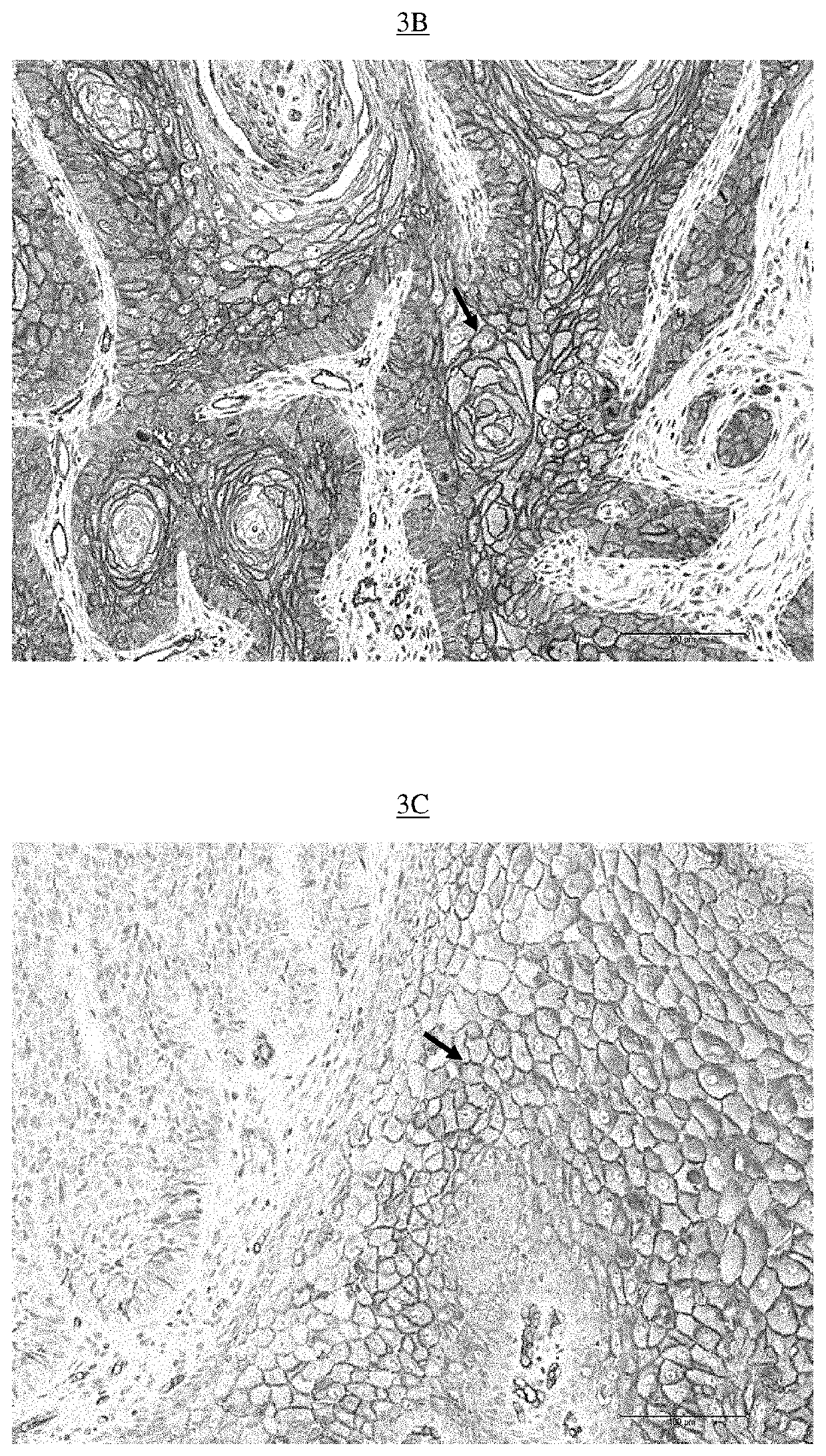Method of isolating and detecting cancer stem cells
a cancer stem cell and isolating technology, applied in the field of isolating and detecting cancer stem cells, can solve the problems of its implementation being faster than existing methods, and achieve the effects of facilitating detection, confirming the effectiveness of enrichment, and being more reliabl
- Summary
- Abstract
- Description
- Claims
- Application Information
AI Technical Summary
Benefits of technology
Problems solved by technology
Method used
Image
Examples
example 1
for the Isolation of Pulmonary Cancer Stem Cells, a Key Example of Respiratory Tract Cancers
[0476]I. Materials Required
[0477]Reagents and Equipment[0478]Individual biotinylated lectin or mixture of biotinylated lectins specifically labelling Pulmonary Cancer Stem Cells (prepared from individual lectins Vector Laboratories)[0479]Kit CELLection Biotin Binder (Invitrogen) containing magnetic beads coupled to streptavidin by a DNA bound[0480]Magnet
[0481]Buffers[0482]Versene (Invitrogen) comprising saline phosphate buffer (PBS) and EDTA[0483]Buffer 1: PBS (Saline phosphate buffer without Ca2+ and Mg2+) with 0.1% BSA (bovine serum albumin), pH 7.4[0484]Buffer 2: PBS (Phosphate Buffer Saline without Ca2+ and Mg2+) with 0.1% BSA (Bovine Serum Albumin) and 0.6% sodium citrate[0485]Buffer 3: RPMI 1640 with 1% FCS (Fetal Calf Serum), 1 mM CaCl2 and 5 mM MgCl2, pH 7.0-7.4.
[0486]II. Duration of the Experiment[0487]20 min to prepare the cells[0488]20 min to label the cells[0489]20 min to incubate...
example 2
city Test
[0521]The objective of a clonogenicity test is to observe the ability of cells to reassemble spheres (corresponding in the patient to the reassembly of a tumor mass) and therefore their proliferative capacity.
[0522]The clonogenicity test is used in this example to confirm the presence of pulmonary cancer stem cells and to quantify said cells in a sample after isolation of pulmonary cancer stem cells by the isolation method described in the present invention. It thus makes it possible to demonstrate the effectiveness of the isolation method according to the invention compared to a control sample not subjected to this method (unsorted cells).
[0523]Clonogenicity tests were performed in a 6-well plate at a density of 500 cells / cm2 in a DMEM composition medium (Gibco) supplemented with 50 units / mL penicillin, 50 units / mL streptomycin (Gibco) and 2.4 g / L sodium bicarbonate, 1 M HEPES buffer (Sigma Aldrich, Saint-Quentin-Fallavier, France), 1× progesterone (Sigma Aldrich), 1× putr...
example 3
abelling of Lectins on Waxed Histological Section: Example of Lung Cancer
[0526]Equipment used: Paraffin blocks, Ice, Microtome, Microtome, Superfrost® blades, Bond Max Automate (Leica Microsystems) with computer, Leica consumables (alcohol, wash buffer, ER1 buffer, dewax buffer, labels, coverslips, tubes), PBS-BSA buffer 5%, Biotinylated Lectins (UEA-1, Jacaline, ABA, ACA, GSL-I and GSL-II) (Vector Lab), Kit Bond Intense R detection (Leica), Leica mounting medium, slides and microscope.
[0527]The paraffin blocks containing lung cancer samples from each of the patients identified by their number (given by the pathological anatomy department) were placed in the ice for about 1 hour to be cooled, in order to facilitate their microtome section to a thickness of 5 μm.
[0528]The so-called “superfrost” slides, this for maximum adhesion of the sectioned tissue, were identified by the same numbers as those present on the blocks. A drop of water was placed in the center of each of these slides....
PUM
| Property | Measurement | Unit |
|---|---|---|
| weight ratio | aaaaa | aaaaa |
| weight ratio | aaaaa | aaaaa |
| weight ratio | aaaaa | aaaaa |
Abstract
Description
Claims
Application Information
 Login to View More
Login to View More - R&D
- Intellectual Property
- Life Sciences
- Materials
- Tech Scout
- Unparalleled Data Quality
- Higher Quality Content
- 60% Fewer Hallucinations
Browse by: Latest US Patents, China's latest patents, Technical Efficacy Thesaurus, Application Domain, Technology Topic, Popular Technical Reports.
© 2025 PatSnap. All rights reserved.Legal|Privacy policy|Modern Slavery Act Transparency Statement|Sitemap|About US| Contact US: help@patsnap.com



